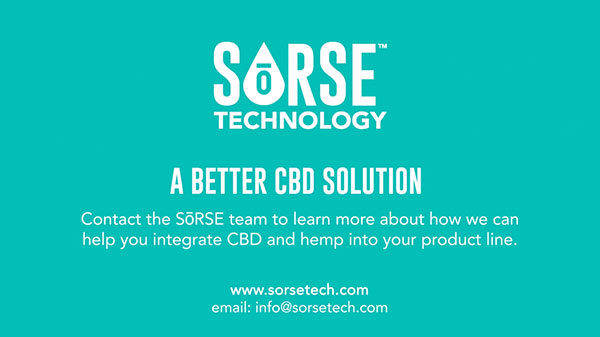On June 14, the Government of Canada announced amendments to the Cannabis Regulations setting out the rules governing the legal production and sale of edible cannabis, cannabis extracts and cannabis topicals.
The amended regulations under the Cannabis Act will support our overarching goal of keeping cannabis out of the hands of youth and protecting Canadians by helping to mitigate the health risks posed by these new cannabis products. I encourage adult Canadians who choose to consume cannabis to remember to store it safely out of the reach of children and youth, and to consult the new evidence-based resources on Health Canada’s website that can support you in making informed decisions. –The Honourable Ginette Petitpas Taylor, Minister of Health
We’ve compiled a few key sections of the regulations for you below.
WHO DOES THIS APPLY TO?
- Holders of federally issued licences for cultivation, processing and sale for medical purposes, who are required to provide information to the Minister;
- Public P/T bodies that are authorized to sell cannabis under a P/T Act, which are required to provide information to the Minister; and
- Private distributors and retailers, who are required to provide data to the public body authorized to sell cannabis or that authorizes sale under P/T legislation (typically a Crown Corporation or a provincial ministry).
LABELING
Amended labeling regulations include:
- For dried or fresh cannabis and cannabis extracts that are in discrete units and intended to be inhaled or for cannabis extracts that are not in discrete units, THC and CBD concentration must be expressed in milligrams per gram (mg/g).
- For cannabis extracts that are in discrete units and not intended to be inhaled and for edible cannabis, the quantity of THC and CBD must be expressed in milligrams. In addition, for any cannabis extract in a container with an integrated dispensing mechanism, the quantity of THC and CBD per activation must be indicated in milligrams (mg).
- For cannabis topicals, the amount of THC and CBD can be expressed as either milligrams per gram (concentration) or milligrams (quantity).
PACKAGING
“The current Regulations allow for one brand element, other than a brand name, to appear on the label of cannabis products, provided that brand element meets certain requirements. One of those requirements is that the surface area of the brand element must be smaller than or equal to the surface area of the standardized cannabis symbol. However, for products containing 10 ppm THC or less, such as pure CBD oil, there is no requirement for the standardized cannabis symbol to appear on the product label. For products with 10 ppm or less, the amended Regulations will specify that the brand element must be smaller than or equal to 25% of the principal display panel, and must be smaller than or equal to the area within the border of the health warning message that appears on the label.
GOOD PRODUCTION REQUIREMENTS
Additions to production requirements have also been added:
- Requirements that pertain to the cleanliness of equipment used with cannabis or ingredients will be expanded to also include conveyances (in this context, the term “conveyance” refers to anything that is used within the licensed facility to transport cannabis or ingredients used in the production of cannabis products; an example would be a forklift or hand lift), consistent with the SFCR (the requirement would apply to both licensed cultivators and licensed processors).
- Building on existing air filtration requirements (which were designed to prevent the escape of odours associated with cannabis plants), there will be a new requirement to have a ventilation system (whether natural or mechanical) that provides clean air and removes unclean air that may have a negative impact on the cannabis or ingredients. This new requirement will not apply in areas of a building where cannabis is being cultivated under a cultivation licence. This measure is intended to prevent contamination, and is consistent with measures under the SFCR.
- Sanitation program requirements will be expanded to explicitly require hand cleaning and sanitizing stations and lavatories on a licensed site, if necessary, to prevent the contamination of cannabis or ingredients. There will also be a new requirement (that will apply to licensed processors only) pertaining to employee clothing, footwear, and protective coverings. Both new requirements are consistent with the SFCR. While current sanitation program requirements under the Regulations do not explicitly include such requirements, it is anticipated that most, if not all, of the new elements already form part of sanitation programs in place at most licensed sites.
- Existing controls designed to prevent the contamination of cannabis will be expanded to also cover ingredients intended to form part of a cannabis product (licensed processors only).
- Consistent with the SFCR, licensed processors (that produce edible cannabis or cannabis extracts) will be required to prepare, retain, maintain and implement a written preventive control plan (PCP) to identify and address through effective control measures any potential hazards that pose a risk of contamination for these products. The QAP will be required to sign-off on the PCP prior to its implementation. Furthermore, the PCP will need to include documents that show evidence that the requirements of the PCP have been met.
- Employees of licensed processors who conduct activities involving edible cannabis (or ingredients used in the production of edible cannabis) will be required to have the necessary competencies and qualifications to carry out their duties, consistent with the SFCR.
- Currently, the QAP is required to investigate every complaint received in respect of the quality of the cannabis and to take measures to address any identified risk. Under the amended Regulations, the QAP will be required to proactively conduct investigations (or to ensure that such an investigation is conducted on their behalf) if they suspect that cannabis or an ingredient presents a risk of injury to human health or does not meet requirements in Part 5 or Part 6 of the Regulations. If their investigation confirms their suspicions, they must immediately take measures to mitigate any risk. The new requirement, which is adapted from the SFCR, will apply to situations such as where the QAP suspects that an ingredient has been improperly stored, resulting in contamination that presents a risk to human health.
- Licensed processors will need to ensure that steps are taken so that animals are not able to enter into any building or part of a building where cannabis is being produced. While this requirement is taken from the SFCR, it will apply to all licensed processors (not just those processing edible cannabis). Notwithstanding this requirement, if a licensed processor is also a licensed cultivator, the use of beneficial insects (e.g. lady bugs) in cultivation areas within the same building will continue to be permitted.
- There will be a requirement that any water (including ice or steam used in the production of a cannabis product) coming into contact with cannabis or an ingredient be potable, unless the water does not present a risk of contamination, consistent with the SFCR. This requirement will apply to licensed processors producing the new classes of cannabis.
- The amended Regulations will also clarify that holders of an analytical testing or research licence will not automatically be subject to the good production practice requirements set out in Part 5, given that, in general, cannabis handled by these licence holders is not consumed by human beings. Researchers may be required to comply with good production practice requirements as a condition of their licence, depending on the activity they are conducting. For example, a researcher administering cannabis to a human test subject would need to ensure that the cannabis meets quality-control requirements. Holders of an analytical testing licence will still need to use validated methodologies when conducting testing.
ADDITIONAL ADJUSTMENTS
- The proposed prohibition on pressurized containers (e.g. metered-dose inhalers) should not form part of the final Regulations, as pressurized containers are subject to controls to regulate their safety under the Canada Consumer Product Safety Act;
- That requirements for the display of THC and CBD quantity or concentration on product labels should be standardized, thereby enabling consumers to make more informed decisions about consumption;
- That it would be easier for consumers, sellers, and law enforcement to determine compliance with the public possession limit of 30 grams of dried cannabis “or equivalent” if the labels on cannabis products indicated the product’s equivalency to 30 grams of dried cannabis; and
- That the proposed transition period of 6 months for cannabis oil be extended to 12 months, with a view to ensuring continued supply to existing products by registered clients who consume cannabis for medical purposes.





